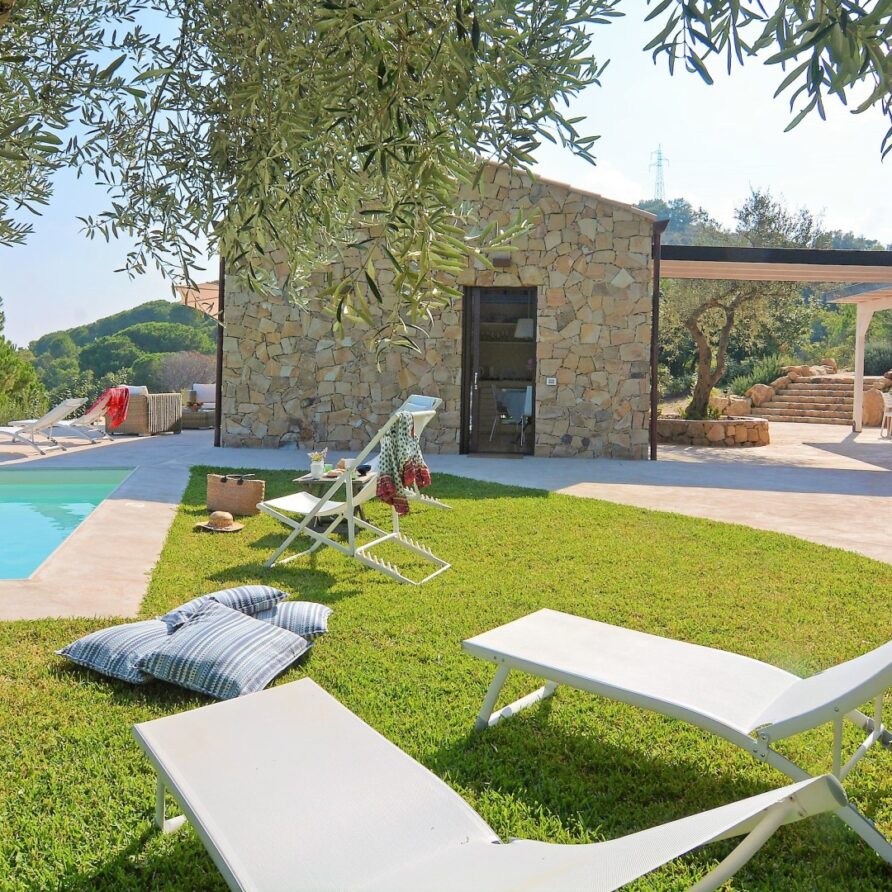What Food is Sicily Known For?
Sicily is known for its bold, flavorful dishes made with fresh, local ingredients. Classics like arancini, cannoli, caponata, and pasta alla Norma are just the beginning. What makes Sicilian food stand out is its mix of influences, from Arab spices and Spanish sweetness to Greek simplicity and Italian heart.
But Sicilian food is more than just a few famous recipes. It’s a reflection of the island’s history and identity. Every region, town, and family brings something different to the table. Meals are built around what’s in season, often cooked simply to let the ingredients shine. And whether you’re grabbing street food in Palermo or sitting down for a homemade feast in the countryside, you’ll notice the same thing: food in Sicily is personal, generous, and deeply rooted in tradition.
Table of Contents
What Makes Sicilian Food Unique?
Sicilian food stands out because of its rich mix of cultural influences and its deep connection to the land. Over the centuries, Sicily has been shaped by Greeks, Arabs, Normans, Spanish, and others, and you can taste every one of them in the island’s cooking.
From saffron and cinnamon to citrus and almonds, the ingredients tell their own story. Arabic influence brought sweet-and-savory combinations like raisins with pine nuts in pasta dishes. Spanish rule introduced tomatoes, chocolate, and chili peppers, which are now staples. Even the Greek love for olives and fresh herbs still lingers in modern Sicilian recipes.
But what really makes Sicilian cuisine special is its simplicity. Most dishes rely on just a few seasonal ingredients, cooked with care and passed down through generations. You’ll see the difference in the quality of produce, the freshness of seafood, and the pride that goes into every home-cooked meal. It’s rustic, regional, and full of heart.
Classic Sicilian Dishes

Sicily has no shortage of iconic dishes, and many are tied to specific regions or local traditions. These aren’t just meals, they’re part of the island’s identity, passed down from generation to generation.
Arancini
These golden, deep-fried rice balls are a true Sicilian favorite. They’re typically stuffed with ragù, mozzarella, or peas, though fillings can vary by region. You’ll find them everywhere from street stalls to bakeries, especially in and around Palermo and Catania.
Pasta alla Norma
This is one of Sicily’s most famous pasta dishes. Made with fried eggplant, tomato sauce, grated ricotta salata, and fresh basil, it’s a simple recipe with a lot of flavor. It’s named after the opera Norma, and it’s especially popular in Catania.
Caponata
Caponata is a sweet and sour vegetable dish made with eggplant, tomatoes, celery, capers, and vinegar. It’s usually served as a side or starter, either warm or cold. The balance of flavors reflects Sicily’s Arabic heritage.
Pasta con le sarde
This dish brings together pasta, fresh sardines, fennel, pine nuts, and raisins. It might sound unusual, but it’s a perfect example of Sicily’s sweet and savory combinations. It’s most commonly found in Palermo and along the northern coast.
Sfincione
Think of this as Sicily’s answer to pizza. Sfincione has a thick, fluffy crust and is topped with tomato sauce, onions, anchovies, and breadcrumbs. It’s often sold by the slice in bakeries and markets, especially in Palermo.
Panelle and Crocchè
Popular street foods, panelle are chickpea fritters served in a sandwich, while crocchè are fried potato croquettes. They’re humble snacks but a big part of everyday life in places like Palermo.
These dishes are just the beginning. What ties them all together is the use of fresh, local ingredients and a love for bold flavors. Wherever you eat in Sicily, there’s a good chance you’ll come across one or more of these local classics.
Sicilian Street Food

If you want to experience Sicily like a local, street food is where to start. It’s quick, flavorful, and deeply tied to the rhythms of everyday life. Nowhere does it better than Palermo, where street food isn’t just a snack, it’s a tradition.
Pane con la milza
This one’s not for the faint of heart. Also known as pani câ meusa, it’s a soft bun filled with veal spleen and lung, often topped with cheese and a squeeze of lemon. It’s a true Palermo classic and a must-try for adventurous eaters.
Stigghiola
This is a real local specialty you’ll mostly find at street grills in Palermo. Stigghiola is made from lamb or goat intestines, cleaned, seasoned with herbs like parsley, and wrapped around spring onions or skewers before being grilled over open flames. It’s smoky, chewy, and full of character, definitely one for the more adventurous foodies.
Babbaluci
A summertime favorite, especially during festivals. Babbaluci are small snails, typically cooked with garlic, parsley, olive oil, and sometimes a splash of vinegar. They’re eaten using a toothpick or just sucked straight from the shell. Simple and full of flavor, they’re a great example of how Sicilian cuisine makes the most of every ingredient.
Frittola
A truly old-school snack that’s harder to find but worth looking for if you’re in Palermo. Frittola is made from leftover bits of meat (usually veal), cooked slowly with lard and spices, then served piping hot in paper cones. It’s rich, greasy, and totally local, one of those dishes that tells a story about Sicily’s humble, no-waste food traditions.
Cannoli on the go
Yes, you can even find freshly filled cannoli from market stalls. They’re usually filled to order so the shell stays crisp. Look out for versions with pistachios, chocolate chips, or candied fruit.
Markets like Ballarò, Vucciria, and Capo in Palermo are some of the best places to try these dishes. But you’ll find street food all over the island, in Catania, Messina, and even smaller towns. It’s affordable, authentic, and a brilliant way to taste your way through Sicilian culture.
Sicilian Desserts and Sweets

Sicilian desserts are bold, colorful, and full of rich, layered flavors. Many of them have roots in Arab and Spanish traditions, often combining nuts, citrus, and sweetened ricotta. If you’ve got a sweet tooth, Sicily is going to spoil you.
Granita
This semi-frozen dessert is one of Sicily’s best warm-weather treats. Made with fruit, sugar, and water, it’s churned slowly to create a smooth, slushy texture that’s somewhere between sorbet and ice. Lemon and almond are the classic flavors, but you’ll also find pistachio, coffee, and seasonal fruits. In eastern Sicily, people often eat granita for breakfast with a soft brioche bun.
Cassata Siciliana
This showstopper of a cake is as much about presentation as it is about flavor. Cassata is made with layers of sponge cake soaked in liqueur, filled with sweetened ricotta and candied fruit, and covered in a green marzipan shell with intricate icing. It’s a traditional Easter dessert, but you’ll spot it in pastry shops all year round.
Frutta Martorana
Artisans hand-paint and shape these beautiful almond sweets to look like miniature fruits and vegetables. They often display them like works of art. Made from marzipan (almond paste), they’re sweet, soft, and commonly sold around All Saints’ Day in early November.
Pignolata
Popular in Messina and surrounding areas, pignolata is a mound of fried dough balls coated in honey or chocolate glaze. It’s sticky, sweet, and perfect for sharing, especially during Carnival season.
These desserts aren’t just delicious, they’re deeply tied to holidays, religious festivals, and local customs. And no matter where you are in Sicily, there’s always a bakery nearby ready to tempt you with something sweet.
Regional Food Traditions in Sicily

Sicily might be one island, but its food traditions can change dramatically from one province to the next. That’s part of what makes eating here so exciting, each area puts its own spin on the classics and offers something you won’t easily find elsewhere.
Palermo and the West
In Palermo and the surrounding areas, street food rules the day. You’ll find bold flavors, plenty of fried options, and a heavy use of offal in dishes like pane con la milza and stigghiola. The Arabic influence is strong here, especially in dishes that combine sweet and savory, like caponata and couscous-based recipes in nearby Trapani.
Catania and the East
Catania has a distinct culinary identity. The locals are fiercely proud of their pasta alla Norma, and the region is big on spicy notes and rich tomato-based sauces. Eggplant, ricotta salata, and fresh herbs show up often. Street foods here tend to be a bit different too.
Ragusa and the South
Down in the south, the food leans toward rustic, hearty dishes. Ragusa is known for its excellent cheeses, especially caciocavallo and ricotta. You’ll also find a focus on legumes, greens, and slow-cooked meat sauces. It’s a region where simple ingredients are treated with a lot of care.
The Aeolian Islands
Even the smaller islands have their own food culture. In the Aeolians, you’ll come across fresh seafood, capers, and the use of local herbs like wild fennel and oregano. Local cooks create light, flavorful dishes using what they grow and catch nearby.
Wherever you go, try to taste what’s local to that area. Ask for house specials at trattorias, explore open-air markets, and don’t be afraid to try something unfamiliar. Sicilian food is full of surprises, and that’s half the fun.
What Drinks Are Popular in Sicily?

Food isn’t the only star of the show in Sicily, the drinks deserve just as much attention. From bold regional wines to refreshing local soft drinks, there’s something for every palate, whether you’re sipping by the beach or toasting over dinner.
Sicilian Wines
Sicily is one of Italy’s top wine regions, and you’ll find local bottles on almost every table. Nero d’Avola is the island’s signature red, rich, fruity, and great with grilled meat or pasta. For whites, Grillo and Catarratto are crisp and bright, often paired with seafood. If you’re visiting the Etna region, try a wine made from grapes grown on the volcanic slopes, the minerality is something special.
Marsala
This fortified wine comes from the town of Marsala in western Sicily. It can be dry or sweet and is traditionally used both for sipping and cooking. Some aged versions are incredibly complex and make a lovely after-dinner drink.
Amaro Siciliano
Like in the rest of Italy, a small glass of amaro is a common way to finish a meal. Sicilian versions, like Amaro Averna (originally from Caltanissetta), are herbal, bittersweet, and said to help with digestion. Locals usually drink it straight or over ice.
Limoncello and Citrus Liqueurs
You’ve probably heard of limoncello, and Sicily’s lemons make an especially fragrant version. You’ll also find liqueurs made from oranges, mandarins, and even pistachios, depending on where you go. They’re usually served cold in small glasses and pack a punch.
Chinotto and Other Soft Drinks
If you’re not drinking alcohol, you can still try something local. Chinotto is a dark, slightly bitter soft drink made from citrus fruit, it’s a bit of an acquired taste but very Sicilian. Blood orange juice and fizzy lemon drinks are also popular, especially on a hot day.
Coffee Culture
Coffee is a serious business in Sicily. A quick espresso at the bar is the norm, often standing up and paired with a pastry or small biscuit. Don’t expect huge cups of coffee here, short and strong is the way to go.
Discover the Flavors of Sicilian Food
Sicilian food is more than just a meal, it’s a story of the island’s history, landscape, and people. From sizzling street food in Palermo to sweet granita in the east, every bite tells you something about where you are. Whether you’re sipping wine on a sun-soaked terrace or sampling pastries in a tiny village bakery, you’ll find that food is at the heart of life in Sicily.
Ready to taste Sicily for yourself? Explore our villas and start planning your stay.





